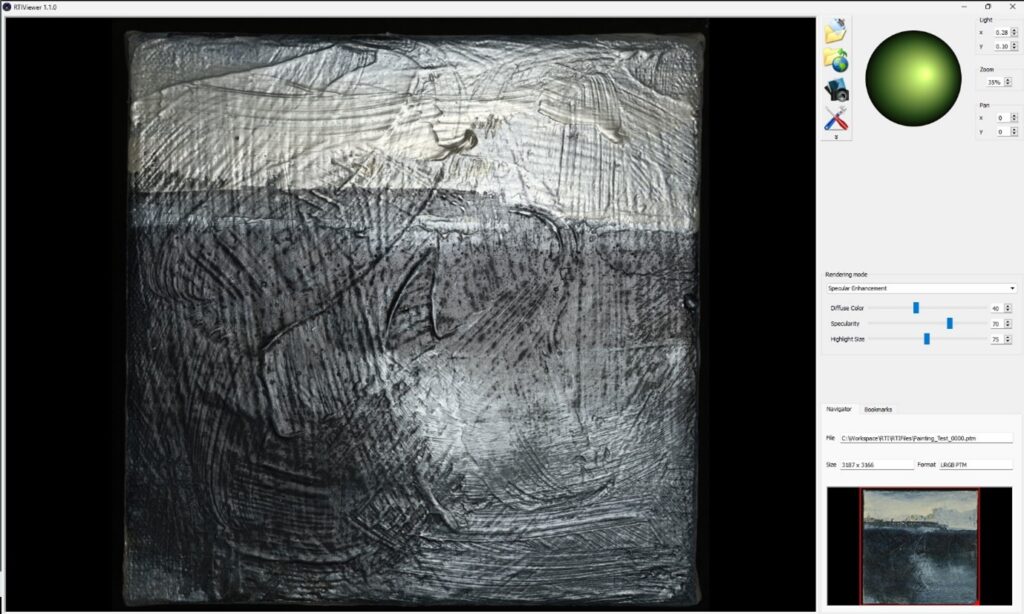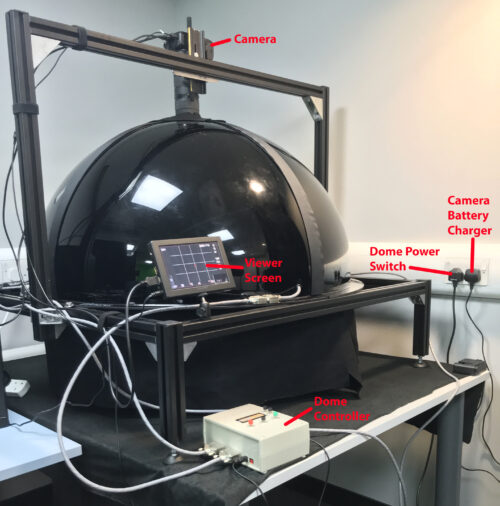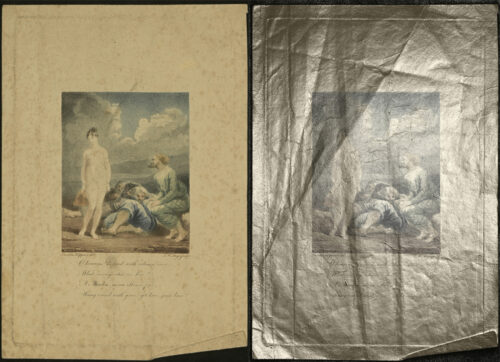
Reflectance Transformation Imaging, or RTI as it is more commonly known, is described as ‘a computational photographic method that captures a subject’s surface shape and color and enables the interactive re-lighting of the subject from any direction. RTI also permits the mathematical enhancement of the subject’s surface shape and color attributes. The enhancement functions of RTI reveal surface information that is not disclosed under direct empirical examination of the physical object’ by Cultural Heritage Imaging https://culturalheritageimaging.org/Technologies/RTI/
I think of it as raking light on steroids- essentially you have a camera at the top which fires in sequence with individual lights located in a circle around the item, and then the registered images can be engaged with interactively through the freely available RTI Viewer https://culturalheritageimaging.org/What_We_Offer/Downloads/View/index.html

In 2022 the Library purchased an RTI dome with the assistance of AHRC funding. This was built and installed by Prof. Kirk Martinez of https://custom-imaging.co.uk/ in the MakerSpace at the Main Library. However, it is only recently that we have been able to start trialling the kit on some Collections items (and a few bits and bobs from outwith the Collections).
RTI suits flat-ish originals that have surface texture, up to A3-ish size, for example:
- Tooled bindings
- Paintings, particularly with impasto surfaces
- Coins/medals
- Illuminations
- Paper damage
One of the items we have tried this out with is CRC Inc.FF.13, our Incunable Koberger, Biblia Germanica from 1483,
You can see how much fine detail is recovered by being able to control the lighting and rendering mode.

Using other rendering modes can give a different perspective to the surface of an object, for example, here you can see how using ‘Normals Visualization’ brings up the impasto in this painting. 
RTI can be very useful for conservation too, its ability to visualise fine details such as degradation of paint or ink application, and also by highlighting areas of damage to folded papers etc.

RTI has the advantage of being very quick to do- from putting the item under the dome, to having a finished .ptm file is less than 10 minutes.
One disadvantage for us, is that although the viewer is available freely, it can’t currently be integrated with our image Collections Platform. However, there is work underway to make RTI files IIIF (International Image Interoperability Framework) compatible, which should enable this for us in the future.
The equipment is soon to be moved from its current location in the MakerSpace, and a new location is yet to be identified, however we now have a far better understanding of how we could use this equipment with the University’s Heritage Collections.
Susan Pettigrew, Digitisation Studio Manager
Be First to Comment